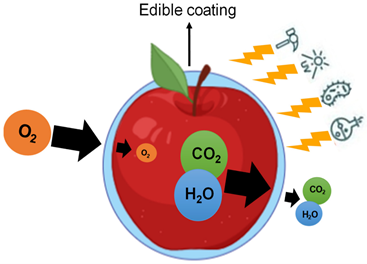Edible coating to extend fruits and vegetables’ shelf life
- Posted By
10Pointer
- Categories
Science & Technology
- Published
2nd Sep, 2022
-
Context
A team of researchers at the IIT — Guwahati has developed an edible coating using marine alga that coated on vegetables and fruits, substantially extends their shelf-life.

About Dunaliella tertiolecta: The Edible coating
- The team used a mix of an extract of a marine microalga called Dunaliella tertiolecta and polysaccharides to produce it.
- The microalga is known for its antioxidant properties and has various bioactive compounds such as carotenoids and proteins.
- It is also used to produce algal oil, a non-animal source of omega-3 fatty acid and is considered a good source of biofuel.
- After the oil is extracted, the residue is usually discarded.
- The researchers used extracts from this residue in formulating their film, in combination with chitosan, which is a carbohydrate.
- It also has antimicrobial and antifungal properties and can be made into an edible film.
Benefits
- The films displayed superior antioxidant activity, thermal stability, mechanical strength, total phenolic content and water vapour barrier property.
- They also had excellent UV-VIS light-blocking properties.
- The researchers also tested the biosafety of these coatings.
Why is it viable?
- The new coatings can be mass-produced.
- They are very stable to light, heat, and temperature up to 40C, edible, and can be safely eaten as part of the product formulation and do not add unfavourable properties to it.
- They retain texture, colour, appearance, flavour and nutritional value.
- The material can be either directly coated on the vegetables and fruits or made into a vegetable storage pouch.
- In both cases, the shelf-life of the vegetables can be extended.
- It is a simple dip coating technique with no significant cost added to the post-harvest processing.
Economic significance of Edible coating
- According to the Indian Council of Agricultural Research, between 4.6 and 15.9 percent of fruits and vegetables go waste post-harvest, partly due to poor storage conditions.
- In fact, post-harvest loss in certain produce items like potato, onion, and tomato could even be as high as 19%, which results in high prices for this highly consumed commodity.
